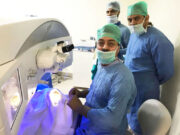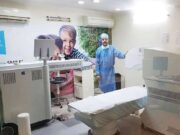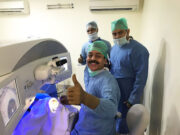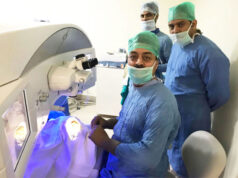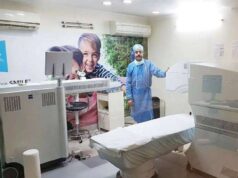What Effect Does Exercise Have on Joint Pain and Stiffness?
The truth is that exercising is healthy for your joints and can relief them from stiffness and pain. The surrounding muscles and tissues play an important role in maintain the joint function and strength. Weak muscles and tissues will simply put further load on your joints.
The physiological benefits of exercise include reduced risks of:
· Diabetes
· Osteoporosis
· Obesity
· Hypertension
· Coronary artery disease
· Serum lipid abnormalities
The psychological benefits of exercise are equally powerful and immediately after exercising:
· Anxiety reduces
· Promotes relaxation
· Enhances mood and well-being
Exercise with joint pain and arthritis is not only possible, but it is also suggested for reducing symptoms and keeping joints active for many years to come.Exercises can be tailored to the requirements of the patient to ensure that the pain does not increase and plays a role in strengthening of the joint.
Here is how working out and exercising can help those suffering from joint discomfort
Exercise nourishes and lubricates the joints
Exercise also helps to reduce joint pain because it increases the circulation of synovial fluid, which lubricates joints. Exercise also helps in the free flow of oxygen and nutrients to the joints.
Exercise increases the blood flow
Every part of the human body, including the joints, requires good blood flow to function properly. Exercise is an excellent technique to increase blood flow and improve circulation. When a person with weak or painful joints exercises, the synovial membrane obtains more of the oxygen and nutrients it requires.
Exercise improves the range of motion
Exercise is more than just raising the heart rate and sculpting muscle. It’s also an excellent approach to increasing joint flexibility and range of motion. When the joints are regularly moved, they remain more supple and active. As a result, when daily activities put strain on the joints, they are more flexible and can withstand the extra pressure.
Exercise gets rid of cellular waste
Another significant advantage of exercise is that it eliminates cellular waste via a natural biological mechanism. Damaged cells in the joints that are no longer beneficial to the body can be eliminated by regular exercise, resulting in less pain over time.
Exercise helps build muscle around the joints.
Many people associate exercise with improving bulk and building muscle, but it also has important uses for arthritis patients. Exercise strengthens the muscles, ligaments, and tendons that surround the joints. When all of these components are strong, the joints may be cushioned and supported more efficiently, reducing joint pain.
Exercises for relieving joint pain
If the pain is severe then specialist opinion should be sought prior to commencing the exercises and one may be commenced on non-weight bearing exercises such as stationary biking or swimming. Nonetheless, the following exercises are frequently recommended for exercising with arthritis.
· Bicycling
· Walking
· Yoga
· Taichi
· Pilates
· Swimming
· Elliptical machine
· Body weight strength training
Many athletes with arthritis use over-the-counter topical pain-relievers after exercise to provide instant and long-lasting relief. But, regardless of what exercises are chosen, it is critical to start slowly and increase gradually with time. Fortunately, there are numerous forms of exercise available, as well as simple ways to alter exercises based on ones skill and ability. This means that all arthritis patients can find workouts that they love and benefit from.
Come see us for pain management
If you are experiencing joint pain, lack of mobility, stiff joints, or other physical difficulties, schedule an appointment with Dr. Amod Manocha, the top pain management specialist in Delhi and Gurgaon, as soon as possible to have your treatment plan tailored to your specific needs.

























